Hello everyone!
Growing vegetables is what my husband loves to do when he doesn't have work. Not only that another reason why he planted vegetables is because we can save money and also we can be sure that what we eat is healthy and free from pesticides.
Right now we have alugbati or it's called Malabar spinach (English name) in our garden. It's the only vegetable left but we do have some seeds of different vegetables like cabbage, bunching onions, string beans, hot pepper, bitter gourd and many more. We can't plant those as of the moment because the land where we shall plant those isn't ready yet but we started cleaning the area.
Cultivar hortalizas es lo que le encanta hacer a mi marido cuando no tiene trabajo. No solo eso, otra razón por la que plantó vegetales es porque podemos ahorrar dinero y además podemos estar seguros de que lo que comemos es saludable y libre de pesticidas. Ahora mismo tenemos alugbati o se llama espinaca Malabar (nombre en inglés) en nuestro jardín. Es la única verdura que queda, pero tenemos algunas semillas de diferentes verduras como repollo, cebollas, judías verdes, pimiento picante, calabaza amarga y muchas más. No podemos sembrarlos por el momento porque el terreno donde los plantaremos aún no está listo pero empezamos a limpiar el área.
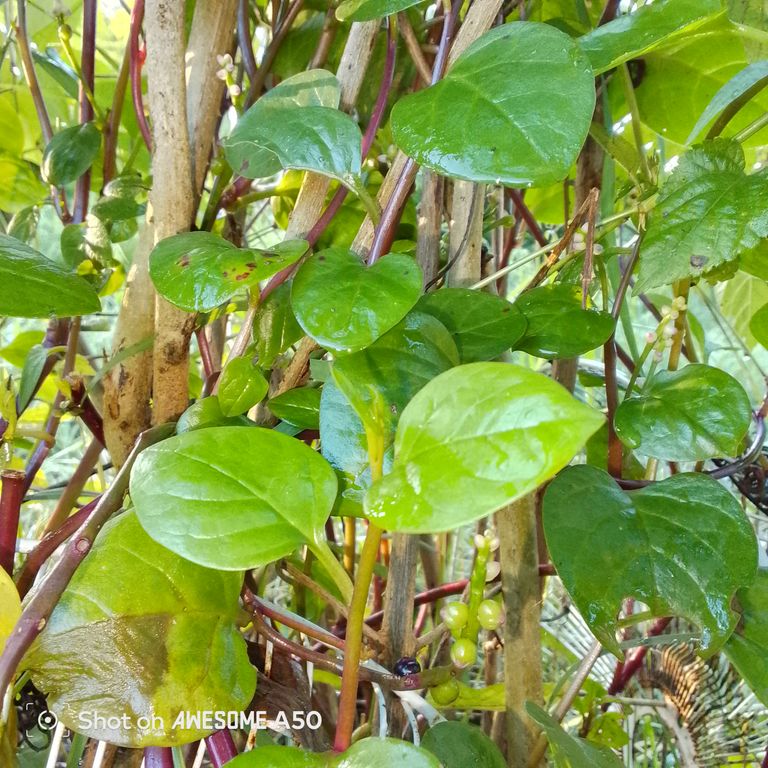
Last day, I noticed that the alugbati have long nines already and the leaves are so tempting to eat. I had been thinking to cook it with sardines and luckily we did have 3 can of sardines left from the grocery that I bought last two days ago but I will be using only two of it.
El día pasado, noté que los alugbati ya tienen nueves largos y que las hojas son muy tentadoras para comer. Había estado pensando en cocinarlo con sardinas y afortunadamente nos quedaron 3 latas de sardinas del supermercado que compré hace dos días, pero usaré solo dos.
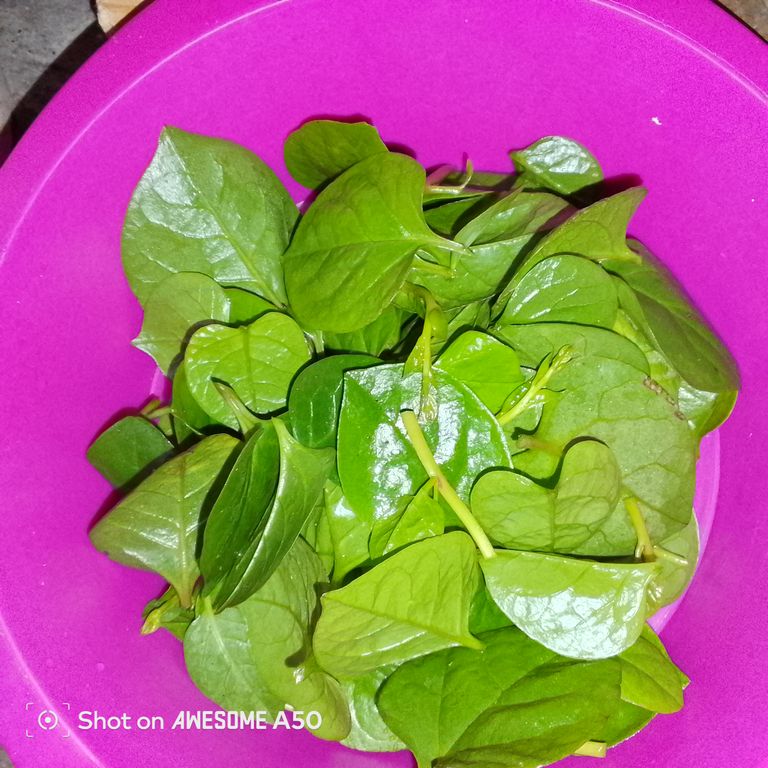
I started cutting the long vines and select those leaves that are still good. Before when I was young whenever my grandma prepared this kind of vegetables, I became problematic because I didn't want to eat this because it's slimy and it gets more slimy when it's mixed with lady's finger and saluyot which English name is Jute. My grandma used to cook it with those veggies and so I only consumed the soup. That was the reason why I was so skinny before because I was a picky eater. Going back to the topic, after picking the leaves I washed it.
Empecé a cortar las enredaderas largas y a seleccionar las hojas que aún estaban buenas. Antes, cuando era joven, cada vez que mi abuela preparaba este tipo de vegetales, me volví problemático porque no quería comerlos porque es viscoso y se vuelve más viscoso cuando se mezcla con dedo de dama y saluyot, cuyo nombre en inglés es yute. Mi abuela solía cocinarlo con esas verduras y yo solo consumía la sopa. Esa era la razón por la que antes era tan delgada porque era quisquillosa con la comida. Volviendo al tema, después de recoger las hojas lo lavé.
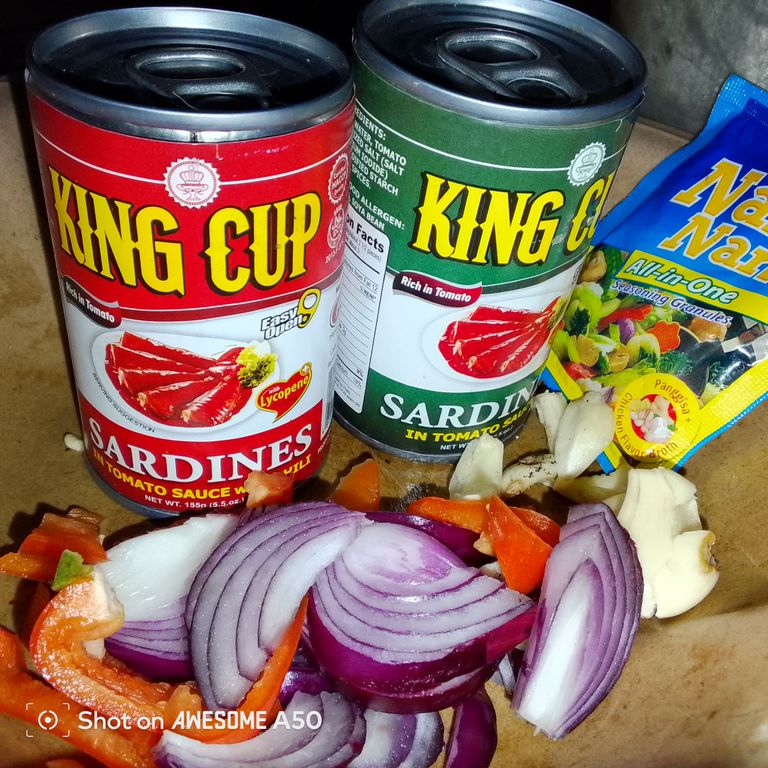
Here are the two canned sardines and the spices that I prepare after washing the picked vegetable. Instead of preparing two red can sardines, I choose the green and red so the soup won't be too spicy as my youngest boy didn't want spicy food. After I prepared the needed ingredients, I started cooking.
Aquí tenéis las dos sardinas enlatadas y las especias que preparo después de lavar la verdura cogida. En lugar de preparar dos latas de sardinas rojas, elijo la verde y la roja para que la sopa no quede demasiado picante ya que mi hijo menor no quería comida picante. Después de preparar los ingredientes necesarios, comencé a cocinar.
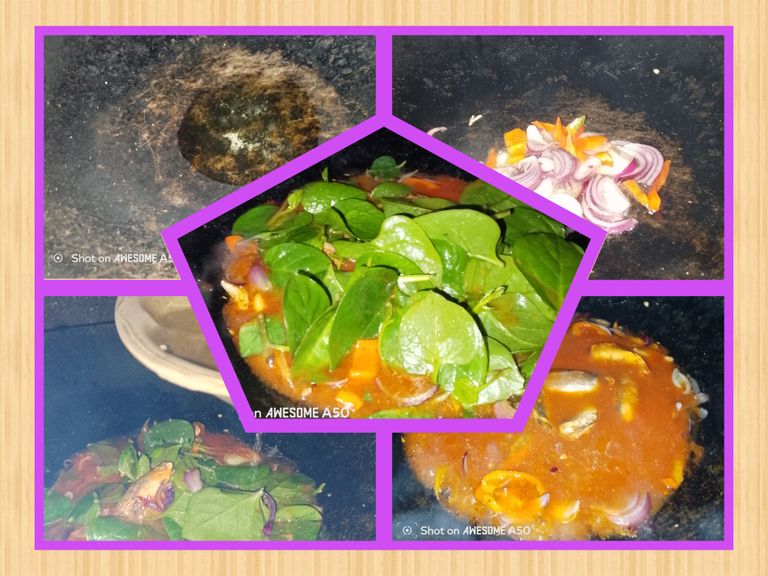
The steps in cooking was very easy. First, I heated the pan and when it finally heated I put oil and sauteed the spices (garlic, onion, bell pepper). Then I added the two canned sardines. Next, I also added the picked leaves and mix them altogether. I then put half cup of water. But one can add more than the amount that I added depending on their liking. When they want it with more soup then a cup or two will do. In our case, we only put a little because it's more savory if only a little amount of water is added. What's next? I season it with salt and Namnam seasoning to balance it's taste. After seasoned, I covered the pan and simmer it for about five minutes enough to cook the leaves.
Los pasos para cocinar fueron muy sencillos. Primero calenté la sartén y cuando finalmente calentó le puse aceite y salteé las especias (ajo, cebolla, pimiento morrón). Luego agregué las dos sardinas enlatadas. A continuación, también agregué las hojas recogidas y las mezclé por completo. Luego le puse media taza de agua. Pero uno puede agregar más de la cantidad que yo agregué según su gusto. Cuando lo quieran con más sopa, una taza o dos serán suficientes. En nuestro caso ponemos sólo un poco porque queda más sabroso si se le añade un poco de agua. ¿Qué sigue? Lo sazono con sal y condimento Namnam para equilibrar su sabor. Después de sazonar, tapé la sartén y la cocí a fuego lento durante unos cinco minutos, lo suficiente para cocinar las hojas.
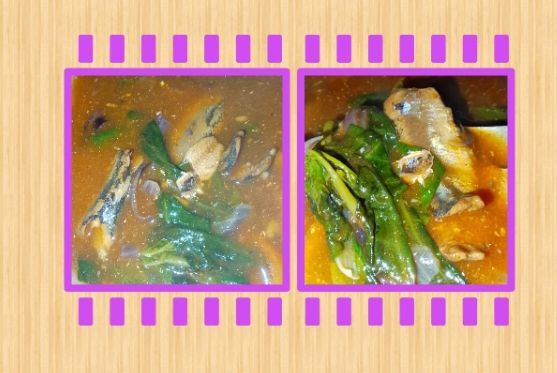
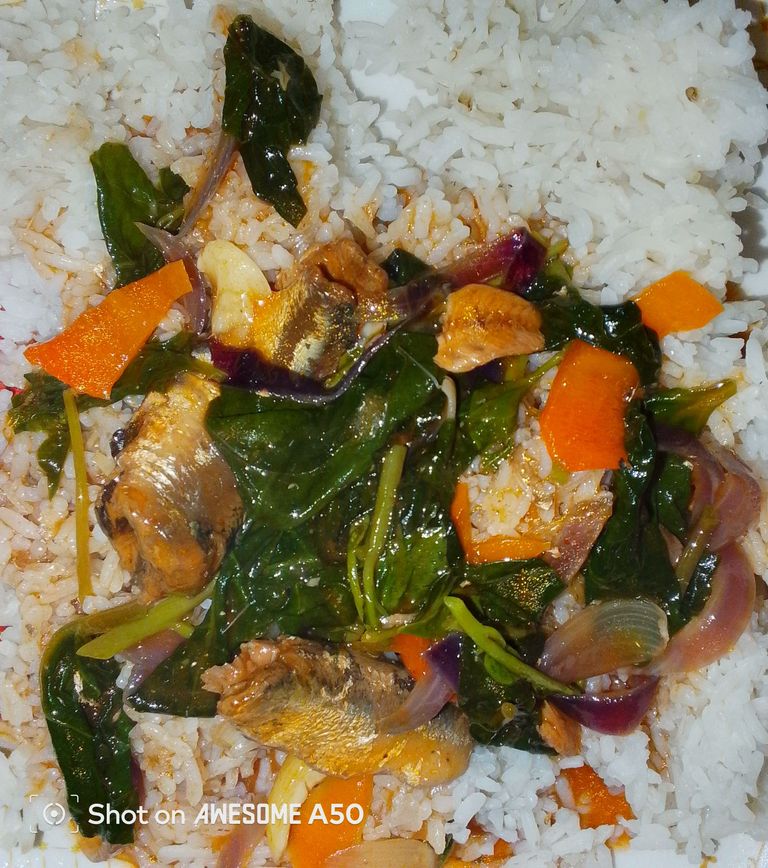
After five minutes of waiting, the dish is now ready to serve. This is called Ginisang Alugbati with Sardines. I put it on the top of the rice and started consuming it. Oh, we were very full. It's a simple dish yet very delicious.
Después de cinco minutos de espera, el plato ya está listo para servir. Esto se llama Ginisang Alugbati con sardinas. Lo puse encima del arroz y comencé a consumirlo. Oh, estábamos muy llenos. Es un plato sencillo pero muy delicioso.
"One cannot think well, love well, sleep well if one has not dined well." - M.F.K. Fisher
Greetings,
@ayesha24
Translated using Google Translate.
Upvoted via X.com
https://x.com/motivation53998/status/1877337851710615999
Thanks always for the support. Much appreciated!